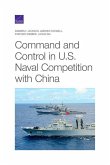This volume describes how technological and geo-political trends are rapidly transforming maritime affairs.
A mix of original and previously published material, this volume describes how the 21st-century great power competition is changing the face of naval operations in general, and U.S. Navy operations in the Western Pacific in particular. The rise of an assertive China and its new anti-access and area-denial capabilities threaten the aircraft carrier-based maritime dominance of the U.S. Navy. Military and political trends in the Western Pacific and beyond suggest that the world is encountering a pivotal moment when existing weapons, tactics, and operations might be rendered obsolete by techno-strategic change. This volume considers these developments from three perspectives by describing: (1) the techno-strategic setting; (2) the institutional constraints that impede the ability of the U.S. Navy to respond to these changes; and (3) a new approach to naval force planning and strategy to cope with these developments. The volume culminates in a discussion of sophisticated strategies and operational concepts that position the U.S. Navy and its maritime allies and partners to prevail in today's techno-strategic churn.
This book will be of much interest to students of naval policy, strategic studies, Asia-Pacific politics, and International Relations.
A mix of original and previously published material, this volume describes how the 21st-century great power competition is changing the face of naval operations in general, and U.S. Navy operations in the Western Pacific in particular. The rise of an assertive China and its new anti-access and area-denial capabilities threaten the aircraft carrier-based maritime dominance of the U.S. Navy. Military and political trends in the Western Pacific and beyond suggest that the world is encountering a pivotal moment when existing weapons, tactics, and operations might be rendered obsolete by techno-strategic change. This volume considers these developments from three perspectives by describing: (1) the techno-strategic setting; (2) the institutional constraints that impede the ability of the U.S. Navy to respond to these changes; and (3) a new approach to naval force planning and strategy to cope with these developments. The volume culminates in a discussion of sophisticated strategies and operational concepts that position the U.S. Navy and its maritime allies and partners to prevail in today's techno-strategic churn.
This book will be of much interest to students of naval policy, strategic studies, Asia-Pacific politics, and International Relations.









